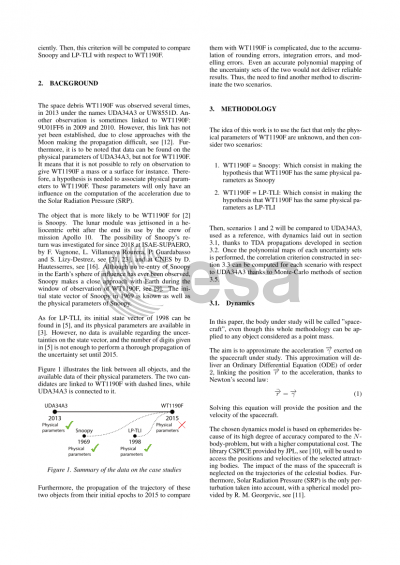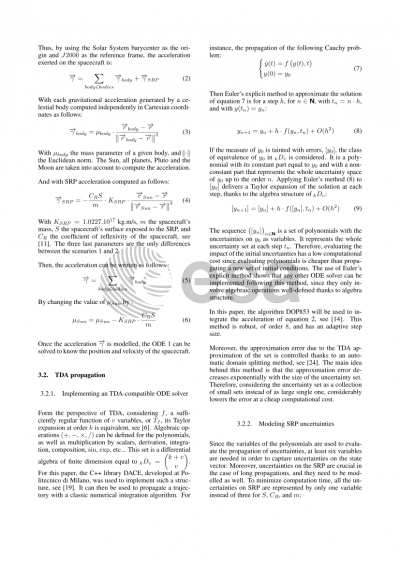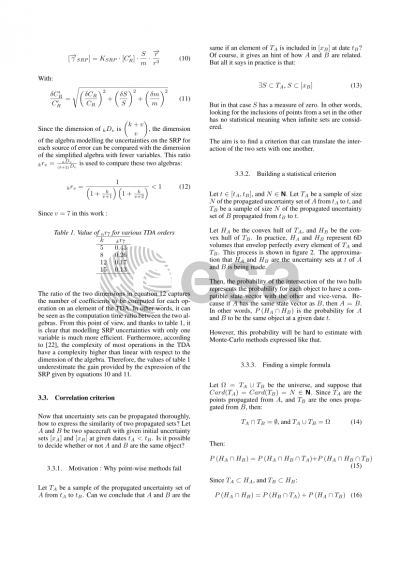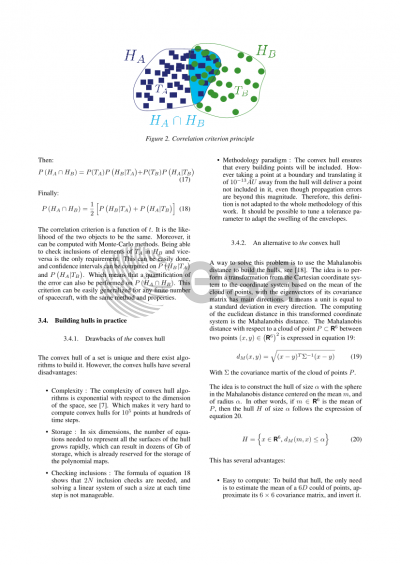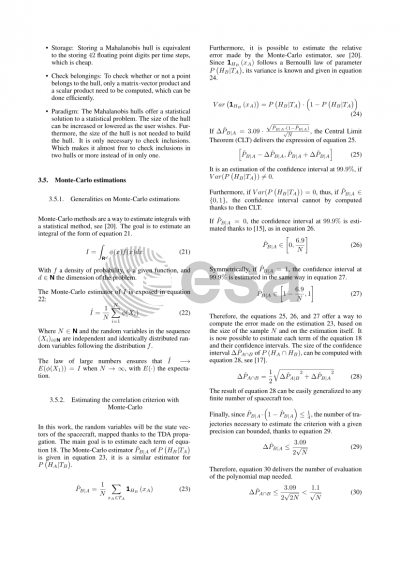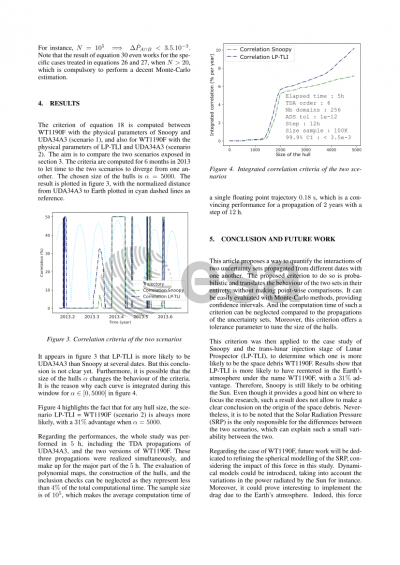Document details

Abstract
The number of man-made objects in space and human ambitions have been both growing for the last few decades. This trend causes multiple issues, such as an increasing in-space collision probability, or the necessity to control spacecraft with high precision. Moreover, the regain of interest in lunar exploration increases the number of spacecraft in the Earth-Moon system, a dynamical system with chaotic behaviour. Thus the need to perform an accurate estimation of the position and velocity of a spacecraft.
This work aims at using Taylor Differential Algebra (TDA), an uncertainty propagation method, by implementing an ephemeris propagation tool designed to compute long term trajectories. The methods developed are then applied to the case of "Snoopy", the lunar ascent module of the Apollo 10 mission, which was injected into a heliocentric orbit in 1969. This module was in fact lost briefly after the last maneuver, and its position is currently unknown. A potential candidate has been identified in the debris WT1109F which entered Earth's atmosphere in 2015. This research allows to explore new potential scenarios and continue the investigation thanks to Monte-Carlo estimations, performed on the data gathered by the propagator.
Preview

